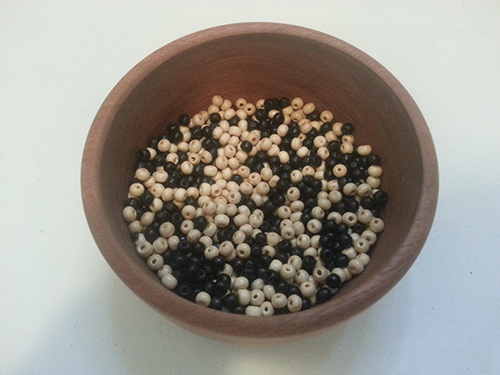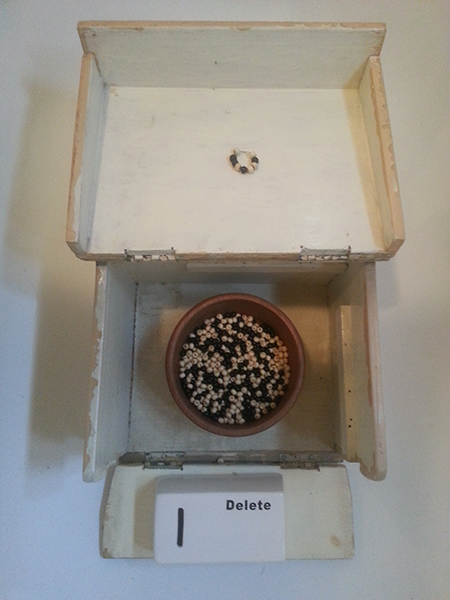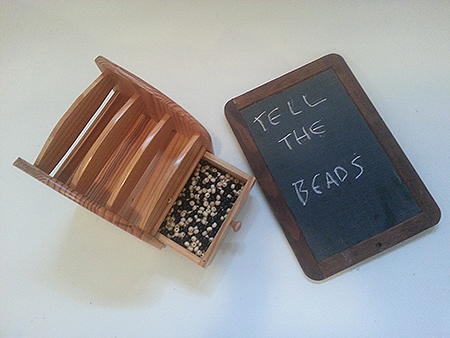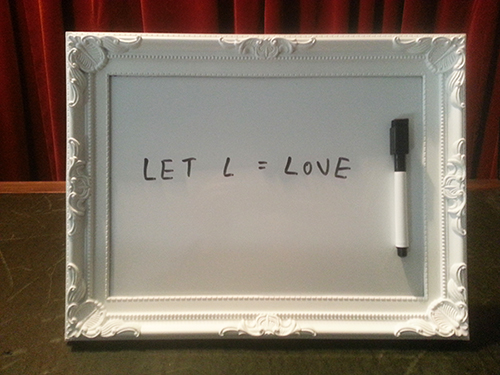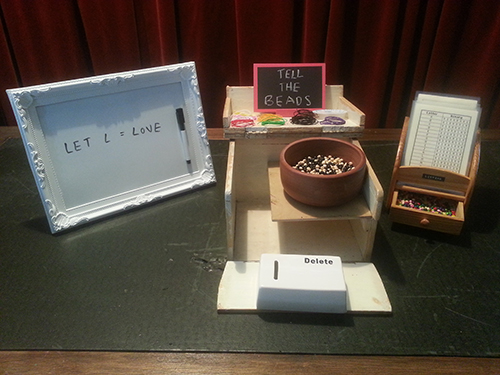Until recently, I didn't think much about beads at all. I did some work a while ago combining craft beading with fishing beads and lures, but this has yet to find funding to develop into a larger work so remained a fairly dormant idea (an example here - don't look if you are easily offended).
However, last autumn, while exploring the delights of Hadleigh Art Trail, I was offered a beading workshop by a lady called Paula from Open Arts. Open Arts does deeply useful and inspiring work promoting positive mental health through arts. Really worth checking out, as what they do is very special.
Anyway, I was definately up for trying a beading workshop. And, brilliantly, Paula showed me the one thing I really needed to know - how to join the ends of wire without tying or soldering it. This was something that has come up several times in projects and it turns out there is a specific technique in beading using what is gloriously called a "crimp ball". So, I basically made an entire piece of jewellery out of crimp balls in the workshop because I was so fascinated (I gave it to my mum for Christmas). And in making and talking, I found out that Paula, before she retired, worked with computers. This bit of information buried itself away, just sitting there while I pottered around stringing beads and manipulating tiger-tail wire.
When this project came up, my mind kept returning to beading, but I didn't know why. I dug around a bit, thinking it could be a good way to combine a fete aesthetic and spirit with that of science and computing. Turns out it goes deep. I was half thinking about where the abacus fitted in the grand scheme of things, but then of course stumbled on prayer beads. Humans have been using beads to represent things a heck of a lot, it turns out. I knew it, I just hadn't quite made the link. From beads as currency to beads as reminders of prayer. Knotted strings carrying messages to be interpreted by others, worry beads, and jewellery as messages of love, ownership and control. Beads are useful symbols and can help us store what is important while we work things out.
I knew I wanted to use beads, but wasn't quite sure how. It needed to be something very simple, cheap, quick to do and also directly keyed into computing. I like the thought of beads representing value, as ideas of what is "computationally expensive" came up a lot in discussion with the RHUL Computer Science Department. As did constant reminders of how big, and how fast computers are. The amount they actually do. And a lot of the somplexity of that is demonstrated powerfully by the fact that everything; every instruction, every kind of data, even images and sounds, is stored as strings of characters.
At SOSLUG very early on, I was fascinated when an the visual feed from a camera plugged into the Pi wasnt being read properly, and was just coming out as lines of numbers, letters and symbols. Derek said that it was "concatenated", which I put in my brain to think about later.

